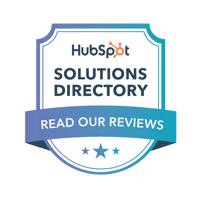Inbound marketing is a highly effective way of reaching a qualified, interested audience and turning them into customers - but only if you do it right. Do it wrong, and you'll sour your brand in the eyes of your leads.
→ Related Content: 5 Inbound Marketing Mistakes You're Probably Making
Digestible, appetizing inbound marketing emails are the key to any successful campaign. If you're not seeing the conversions you want, chances are your emails are to blame. Your emails might suck, and here's why.
1. They're Too Long
Inbound emails are often the first impression you have with a lead - and there's a tendency to want to shove everything at them. Leads don't want massive emails. Cluttered, messy emails have a few key negative effects:
- Your lead doesn't have time to read all that content
- Shoving too much content into one email tanks the accessibility
- Cluttered, lengthy emails look and load awfully on mobile
Instead, make it concise and stick to one key theme or message per email. The easier to scan, the better.
2. They're Not Relevant to Your Audience
Inbound marketing is nothing new, and your leads are savvy to impersonal, broad emails that go out to everyone. Segment and personalize your follow-up emails so they provide targeted content based on their preferences and needs.
Smart content is a highly effective way to achieve this. Add a simple field to your landing page for industry or interest, and then use smart content to customize what information leads see in their inbound emails. For example, a company that creates custom databases could follow the previous steps so that a lead in the finance industry sees a case study for a bank's database creation, while a car dealership sees a case study of an inventory management application.
The more you can customize and tailor your message, the more likely a lead is to interact with it. Think about the emails you receive - when you get impersonal service offerings that don't relate to your needs, aren't you likely to just delete the email?
→ Related Content: How to Create Inbound Marketing Campaigns that Convert
3. You're Not Giving Them Something to Do
Emails are great - but if you want your audience to do something, you need to tell them what to do. What action do you want them to ultimately take? Sign up for a demo? Buy online? Schedule a tour? Request a quote? Whatever it is, pick something specific. A simple "contact us" isn't going to cut it - they have your website and your phone number already, that's not a concrete action.
Once you've got that action in mind, use verbs and action-oriented language in your actual CTAs. A CTA of "Schedule a Tour" vs. "Click Here" is much more likely to get leads to take action. Why? Because in the first option, it's abundantly clear what clicking on that button will do.
4. You're Sending Too Many
One of the most common mistakes with inbound marketing is sending too many emails and at the wrong times. Don't bombard your leads with emails every day. Give them a chance to breathe. A good rule of thumb is to stick to 3-4 follow-up emails only per each inbound campaign and space them out across several weeks.
Additionally, consider when you're sending these emails. If your inbound campaigns are set up based around actions - for example, if you send email 1 immediately after they fill out a form and email 2 nine hours later - you might be sending emails when your audience isn't anywhere near their inbox.
Another important consideration is time zones - chances are, not all of your leads are in the same time zone. But are they all getting emails at the same time, regardless? Consider who is receiving your emails and how often, so that you can create a schedule for leads to receive emails when they're most likely to be awake and checking their inbox. For a lot of B2B clients, your audience is in "business mode" M-F, 8-5 PM - so avoid sending them inbound emails over the weekend.
Your inbound marketing campaign is only as effective as your emails. Create concise, customized, clear and calculated emails to make the most out of your inbound marketing campaigns.
Free Download: Everything You Ever Wanted to Know About Inbound Campaigns
Content is critical, and the best way to create compelling content is by providing value. Inbound campaigns help you find, target, and convert your ideal audience. Click "get my eBook" below to learn how to create buzz-worthy Inbound campaigns that drive action.
BizzyWeb is a Minneapolis-based digital marketing and web design agency that helps companies get the high-quality leads they need to grow and thrive. Our tactics include inbound marketing, SEO, advertising, web design, content creation and sales automation. We are an accredited HubSpot Platinum Partner and we offer full-service HubSpot onboarding, enablement and strategy for new and current users.






